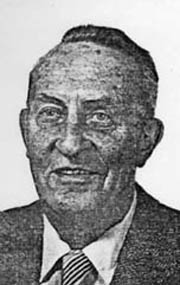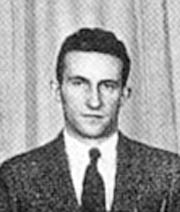Roland Snodgrass
Snodgrass Hall Named for Father of Alaskan Agriculture
Snodgrass Hall at Matanuska-Susitna College is named for the "father of Alaska agriculture," Roland Snodgrass. This article originally appeared in Alaska Farm & Garden magazine. By Pam Rule

It is only fitting as we approach planting season to remember the Father of Alaskan Agriculture, Roland Snodgrass. He was a member of a pioneer Alaska family. His father, M.D. Snodgrass, came to Alaska in 1907 to help establish the experimental farms in Kenai, Kodiak, Matanuska and Fairbanks.
Roland took all his early school in Alaska and graduated with honors from the Alaska Agricultural College and School of Mines, now known as the University of Alaska Fairbanks, with a Bachelor of Science degree in agriculture in 1932. From that time, until his death on August 7, 1983 he proved a tireless proponent of Alaskan agriculture, both in public and private life; thus deserving, in the hearts of many, the true "Father of Agriculture" title in Alaska.
In a letter dated Aug. 11, 1983, Sen. Jay Kertula wrote of Roland Snodgrass: "Rollie was exactly what was needed in the frontier—a Thomas Jefferson-archeologist-paleontologist, still revered on St. Lawrence Island. He worked with and exceeded the contribution of the immortals of Alaskan anthropology. A professor of genetics, chemistry, and agriculture, a surveyor and veterinarian, a lifetime Alaska farmer, land use planner, agricultural economist and director of the state Department of Agriculture. He was the catalyst in developing our community college. He gave the site of the new town of Palmer to the Colony. He was the first bulldozer operator in Alaska in 1928. If some believe that is too much for one lifetime—that is just the tip of the iceberg."

An excerpt from another letter written by fellow farmer Donald Breedon: "We first met in 1949, when Newcomb & Snodgrass were in the hay and livestock business, which was located at the edge of Palmer Town (now downtown Palmer). At this time my wife and I were homesteading in the Huffman-Birch road area southeast of Anchorage. We bought livestock in the Matanuska Valley, some of which we purchased from Newcomb & Snodgrass."
"At this point in his life Rollie had already worn many different hats, including being a college professor, president of the Matanuska Maid, Inc. Board of Directors and soon to become the state director of agriculture, to mention only a few."
"These were trying times for Alaska farmers (which hasn't changed much over the years). Recombined milk was being introduced to our market. Cheap, surplus fresh milk was being shipped in from Outside. No potato inspection or grader or standards to go by were available. To solve these agricultural-related problems, and many more, it entailed many, many, meetings that lasted into the wee hours. I can't ever remember attending an agriculture-related meeting that Rollie wasn't at."
"Rollie was a walking encyclopedia. He always seemed to be able to fill in the blank spaces and have the right approach to tough problems, as well as acting as referee between quarrelsome factions. Hopefully, we will be able to pass some of them on to others. Thereby keeping the 'Snodgrass Agricultural Tradition' alive."
Shortly following Roland's death, Bill Heim, director of the Division of Agriculture wrote: "Rollie's great knowledge in so many different fields always amazed me. He had more knowledge of the history of Alaska agriculture than anyone I knew, but he also had a vision of what agriculture could be in Alaska. During his term as director of agriculture, there were many projects that he initiated, including some of the first land sales at Delta Junction, the meat inspection program, grain incentive program, frozen vegetable processing project in cooperation with the University, and USDA, the reindeer slaughter plant at Nome, and the irrigation loans from AFLF due to the dry years in the late 1960s.
"The list could go on and on. Alaskan agriculture has lost a good friend and a doer. Rollie will be remembered as one of the great pioneers of Alaskan agriculture."
UA Site named after Roland Snodgrass
